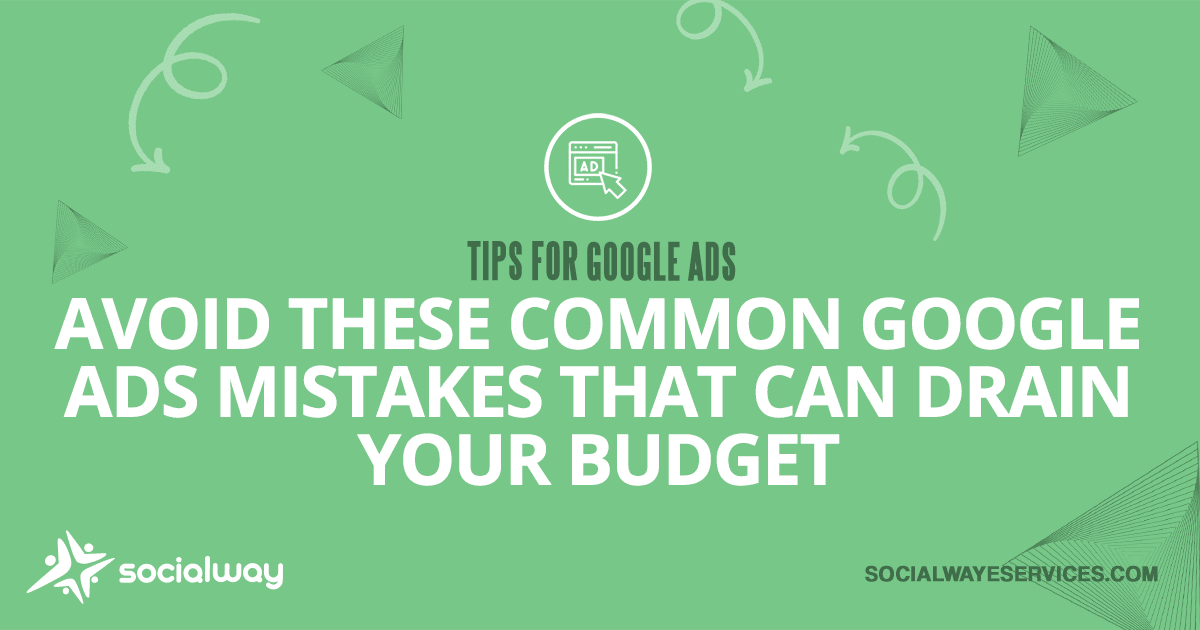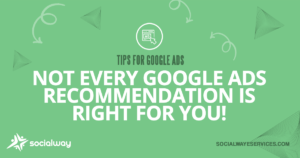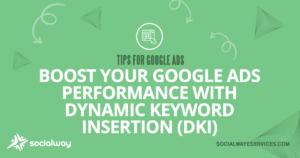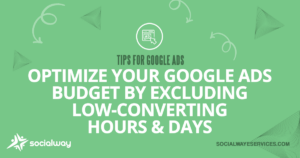Google Ads is a powerful way to help your business grow. It helps you connect with possible customers, bring visitors to your website, and increase sales. However, if not managed properly, it can be a waste of money. A lot of advertisers, especially those new to Google Ads, often make simple mistakes that waste their money without giving good results.
In this article, we will cover five common Google Ads mistakes and show you how to avoid them. By solving these problems, you’ll make your campaigns work better and get the most out of your budget.
Mistake 1: Not Defining Clear Campaign Goals
Why It Is A Problem
Running ads without clear goals is like driving without knowing where you’re going. You might be getting clicks, but are they turning into sales or sign-ups? Advertisers who don’t set clear goals often end up wasting their budget on traffic that isn’t useful.
Fix It
Set SMART goals for your campaigns:
- Specific: Clearly define what you want to achieve, such as increasing sales or generating leads.
- Measurable: Identify metrics to track success, such as conversion rates or revenue.
- Achievable: Ensure the goals are realistic based on your budget and resources.
- Relevant: Align the goals with your overall business objectives.
- Time-bound: Set a deadline for achieving these goals.
By setting clear goals, you can use your budget better and track how well your campaign is doing.
Mistake 2: Not Monitoring And Improving The Quality Of Ads
Why It Is A Problem
Not regularly monitoring and improving your Google Ads can lead to wasted budget and weak results. Irrelevant ads get fewer clicks, lower Quality Scores and higher costs per click. This means you pay more for less visibility. Poorly optimized ads also hurt landing page performance, leading to high bounce rates and fewer conversions.
Fix It
To improve your ad quality and performance:
- Review your Ads Regularly: Monitor which ads are performing best and which are underperforming.
- Focus on Relevance: Make sure your ad copy closely matches your keywords and aligns with what users are searching for. Relevant ads get higher click-through rates and better Quality Scores.
- Optimize Ad Extensions: Use sitelinks, callouts and structured snippets to provide more information and boost engagement.
- Track Performance Metrics: Keep an eye on click-through rates (CTR), conversion rates and Quality Score. Use these metrics to guide improvements.
- Update and Refresh Ads Frequently: Trends and user behavior change. Refresh your messaging to stay relevant and competitive.
Mistake 3: Ignoring Negative Keywords
Why It Is A Problem
If you don’t use negative keywords, you might get the wrong kind of visitors and spend money for nothing. Negative keywords stop your ads from showing up in searches that aren’t connected to your business. For example, if you sell flowers and use the word “flowers” as your keyword, your ad might show up for searches like “flower wallpaper” or “flower delivery jobs,” which aren’t related to what you sell.
Fix It
Find unrelated search terms and add them to your list of negative keywords. This will help you remove unwanted traffic and make your campaigns more relevant. Frequently check your search terms report to find new negative keyword opportunities and keep improving your campaigns.
Mistake 4: Not Monitoring Quality Score Consistently
Why It Is A Problem
Quality Score affects how often your ads appear and how much you pay per click. Ignoring it can lead to higher costs and lower ad visibility. A low score often points to issues with your keywords, ads or landing pages.
Fix It
Optimize Quality Score at the keyword and campaign level:
- Use Relevant Keywords: Choose tightly themed, specific keywords.
- Improve Landing Pages: Ensure they match keyword intent and load quickly.
- Organize Ad Groups: Group similar keywords to improve relevance.
- Track Key Components: Monitor Expected CTR, Landing Page Experience and Ad Relevance.
Improving these areas helps lower costs, boost visibility, and improve overall campaign performance.
Mistake 5: Sending Traffic to a Bad Landing Page
Why It Is A Problem
Even if your ad is great, sending people to a bad landing page can stop them from taking action. A page that loads slowly, has confusing buttons or links, or is too general and unrelated can make potential customers leave without doing anything.
Fix It
To optimize your landing page:
- Ensure the landing page headline matches the ad copy.
- Make your CTA clear and compelling (e.g., “Get a Free Quote” or “Apply Now”).
- Improve page load time (check Google PageSpeed Insights).
- Remove unnecessary form fields—only ask for the essentials.
A well-designed landing page keeps visitors interested and boosts your chances of turning them into customers.
Avoiding these common Google Ads mistakes can make a big difference in how well your campaigns perform and how efficiently you spend your advertising budget. By setting clear goals, writing high-quality ads, using negative keywords, monitoring your Quality Score, and optimizing your landing pages, you’ll create more effective campaigns that attract the right audience and deliver real results.
For businesses that want to maximize their Google Ads potential, Socialway eServices can help. We specialize in creating and managing effective Google Ads campaigns that deliver results. Reach out to us today to learn how we can help your business achieve a better return on investment.




